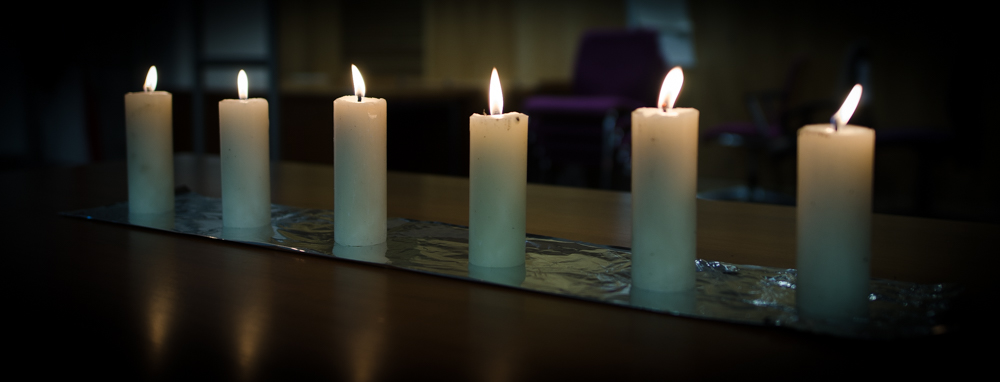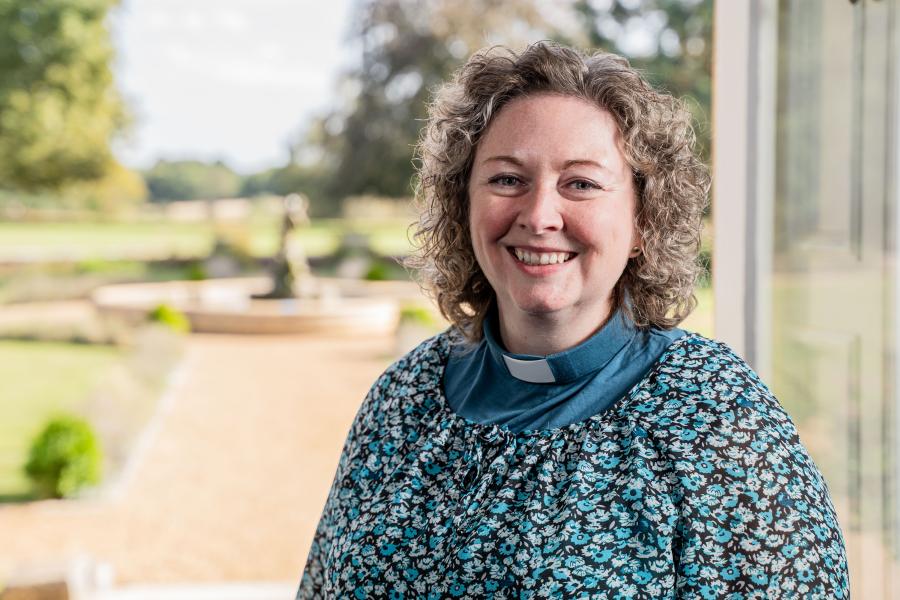Many people are reporting online contacts with new people joining in worship who haven’t been part of a physical congregation. What are some of the things we might be able to do to help them stay in touch, or become part of physical congregations?
This is a short set of suggestions for you to use or adapt according to your own circumstances. You may already have thought of most of them, and you may have other ideas worth sharing, but we hope this is a useful checklist for you. Do contact us if you have other ideas to add, or feedback to improve this.
Mark Carter (mcarter@cofe-worcester.org.uk)
Doug Chaplin (doug.chaplin@cofe-worcester.org.uk)
Continue some kind of online worship
 While all the rest of these suggestions are about participating in activities that happen in your church building(s) we don’t underestimate the importance of what we’ve discovered about being together in online church. Some people may – for reasons of shielding or particular disabilities – need to participate virtually in your church life as their main means of belonging. What could you do to enable some form of online presence – streamed or recorded – to continue, whether occasionally, monthly or more frequently?
While all the rest of these suggestions are about participating in activities that happen in your church building(s) we don’t underestimate the importance of what we’ve discovered about being together in online church. Some people may – for reasons of shielding or particular disabilities – need to participate virtually in your church life as their main means of belonging. What could you do to enable some form of online presence – streamed or recorded – to continue, whether occasionally, monthly or more frequently?
Church Video
Make a simple video that walks people into your church, and “looks” around it, perhaps with a voiceover along these lines. “You’ve met us online, today I’d like to introduce you to the church building where we gather. The outer door is usually closed to stop birds flying in, but not to keep you out. As you open the door, you’ll find a beautiful interior and a quiet space to be reflective. On Sundays, and at some other times, you can meet some of the welcoming people you may have already seen online, and discover another way of sharing prayer and friendship with them. Our buildings, with their permanent presence in wood and stone, bricks and mortar are a reminder that God is always present in our communities even when we’re not thinking about him.”
Social Media
 It is likely that newcomers came to online worship through social media. As with online worship, continue to make good and up-to-date use of your website and social media channels to encourage continued engagement with the church. Perhaps you could highlight an architectural, or historical feature of the week or month from a particular building, or post short vox pop interviews with church members and clergy about their faith or what’s going on. Adding a giving point on your website which is replicated in the building with a contactless giving point could add a uniformity of ways to give to the church.
It is likely that newcomers came to online worship through social media. As with online worship, continue to make good and up-to-date use of your website and social media channels to encourage continued engagement with the church. Perhaps you could highlight an architectural, or historical feature of the week or month from a particular building, or post short vox pop interviews with church members and clergy about their faith or what’s going on. Adding a giving point on your website which is replicated in the building with a contactless giving point could add a uniformity of ways to give to the church.
Simple interpretations
Put some simple interpretations around some key symbolic furnishings as well as any standout historical or architectural features. Wherever possible combine both building and faith interest together. These could be A4 pages in a perspex stand near the relevant item, or on a welcome board near the door with a photo of the relevant items. (If you produce a leaflet, encourage people, once they’ve picked one up, to take it away with them.) Keep the words to a minimum, and if there’s more to say, consider sticking a QR code on the information board. One simple and free way to create QR codes is https://www.qrcode-monkey.com/. Some sample text you can adapt for key furnishings is included in an appendix at the end of this
Old and New
Many of our churches are historic, often listed, buildings and have architectural features and internal fittings of regional and national interest. They are not museums, though, but living and working churches. Changes and alterations to the building tell the ongoing story of the local community and this should not stop now. Profile the newer additions (“this church has a kitchen and toilet”, “we use projector screens in our worship”) and invite newcomers to offer ideas for the further development of the church.
Accessibility
For many, physically accessing a church building is difficult. It is often easy to think that accessibility is just a case of ramps and handrails, but consider how your church building can become more accessible to people with a wide range of disabilities and conditions, such as those with autism, dementia, sight loss or hearing loss.
Signpost your social and environmental action
 Social and environmental action are often important connecting points. If you are working toward your eco-church award, have taken steps to shrink your carbon footprint, or have a conservation area in your churchyard, then tell people what you’re doing. Likewise, if your engaged with your foodbank, support a development project through Christian Aid or Tearfund, run a dementia café, or have some other kind of engagement, let people know what you’re doing. In any of these cases, offer some kind of link to tell them how they could find out more, or get engaged.
Social and environmental action are often important connecting points. If you are working toward your eco-church award, have taken steps to shrink your carbon footprint, or have a conservation area in your churchyard, then tell people what you’re doing. Likewise, if your engaged with your foodbank, support a development project through Christian Aid or Tearfund, run a dementia café, or have some other kind of engagement, let people know what you’re doing. In any of these cases, offer some kind of link to tell them how they could find out more, or get engaged.
Appearance
People coming to the church for the first time may well be taken by the spirituality of the building and the majesty of the architecture, but if the church has the appearance of a bric-a-brac shop then it could be off-putting. Those corners that have become dumping grounds, those overflowing shelves of scruffy books and leaflets, and noticeboards that advertise long-expired events are things you as a community may live with but are probably long overdue a clear-out to make the church attractive to new people. Consider an honest assessment of what you keep, why you need it and, if not, should it be disposed of (perhaps requiring appropriate permission).
Prayer Points
 If you have any particular focal points for prayer – a candle stand, an icon, the blessed sacrament, a prayer tree – you may want to check how obvious they are to a newcomer, and point them towards them. Try to ensure there is somewhere people can leave prayer requests, with an explanation of how you will deal with them confidentially. It may help to provide some simple texts which people can use to pray, including the Lord’s Prayer. If you provide a prayer leaflet, then ask people to take their copy away with them once they’ve picked it up.
If you have any particular focal points for prayer – a candle stand, an icon, the blessed sacrament, a prayer tree – you may want to check how obvious they are to a newcomer, and point them towards them. Try to ensure there is somewhere people can leave prayer requests, with an explanation of how you will deal with them confidentially. It may help to provide some simple texts which people can use to pray, including the Lord’s Prayer. If you provide a prayer leaflet, then ask people to take their copy away with them once they’ve picked it up.
Liturgy
There is a balance to be struck between explaining what we do, and interrupting the atmosphere created by the liturgy. You may want to consider saying as part of your welcome that some of what takes place may seem a little strange but that you’ll try to guide people from time to time from the front; perhaps adding that you hope they’ll find the experience relaxing and uplifting.
You may want to consider asking regulars to make sure they sit near the front, so visitors have an example of standing, sitting and kneeling to follow, perhaps also keeping the back rows free for latecomers until after the service has begun. You may also want to consider producing a simple bookmark for your service books or booklets, with the main items of the service listed with page numbers beside them. (You will need to consult whatever the current guidance is on how to use printed materials safely.)
Appendix: Sample Interpretations
Some suggestions for you to adapt, particularly by including your own historical information. If on a board, or in a leaflet, include a photograph of the furnishing beside the explanation.
Font
This is the font (a word connected with fountain because it is often filled with water). It is where people are christened or baptized, usually by having water poured over their heads. This one is from the middle ages, and is large enough for babies to have been fully dipped into the water. It stands near the church door, because it represents entry into the church, as the person being baptized is invited to be overwhelmed by God’s love. It reminds us that God welcomes everyone into his presence, and we try to make everyone welcome in this building where we hope you will also experience God’s loving presence.
Lectern
Most churches have a dedicated reading stand like this, called the lectern (an old word which means a reading stand). In the early 16th century there was a movement to renew the importance of reading the Bible. King Henry VIII issued a law in 1538 saying every church must acquire an English Bible and put it in a prominent place. New learning, new understanding of the faith and the recent invention of printing all joined together to make this possible. Public shared listening to the Bible being read out loud has always been very important to the Church of England as a way of trying to listen to God.
Pulpit
The pulpit is a place for preaching and teaching. In the days before sound systems, raised pulpits were really good at helping someone be heard, and still today, they can be helpful at allowing lip-reading for visually impaired people. Christian faith always comes to us from someone else, it might be a parent, godparent, friend, colleague or minister, but there’s a content to it that needs to be passed on. The raised position of the pulpit reminds us how important this is. Sermons can vary a great deal in style and are one way of helping people understand that content and make it their own.
Altar
The altar table is a focal point of the building. One of the most characteristic activities Christians do is to eat a symbolic meal using bread and wine, called variously Holy Communion, the Mass, and the Eucharist, the only form of regular Christian worship commanded directly by Jesus nearly two thousand years ago. This is the table for that symbolic meal, in which people believe they experience Jesus’s presence in a unique way. Ours is made of wood, emphasising its nature as a table. Others are made out of stone, emphasising the permanence of God’s presence in his church. (Obviously swap these round if your church has a stone altar!)

